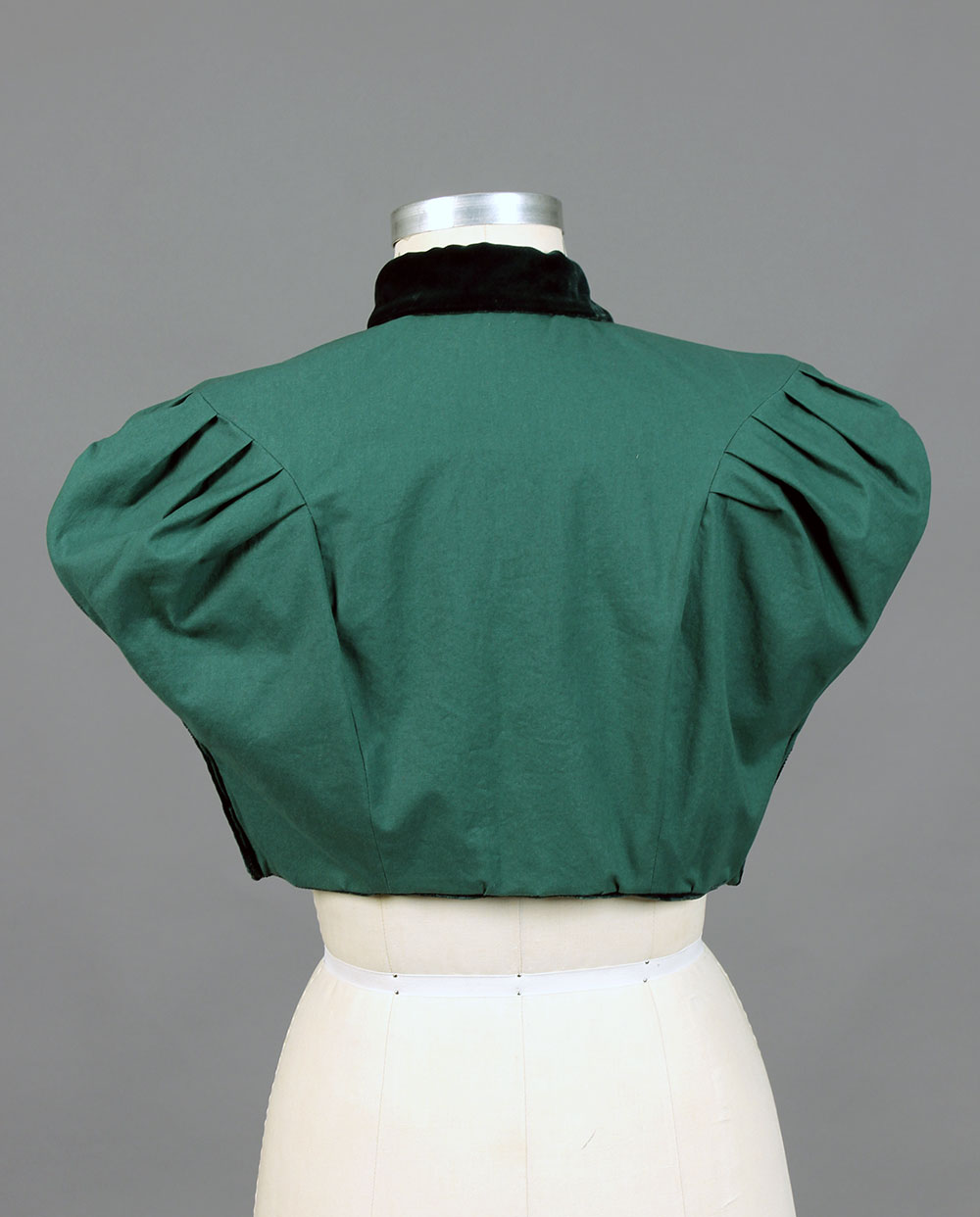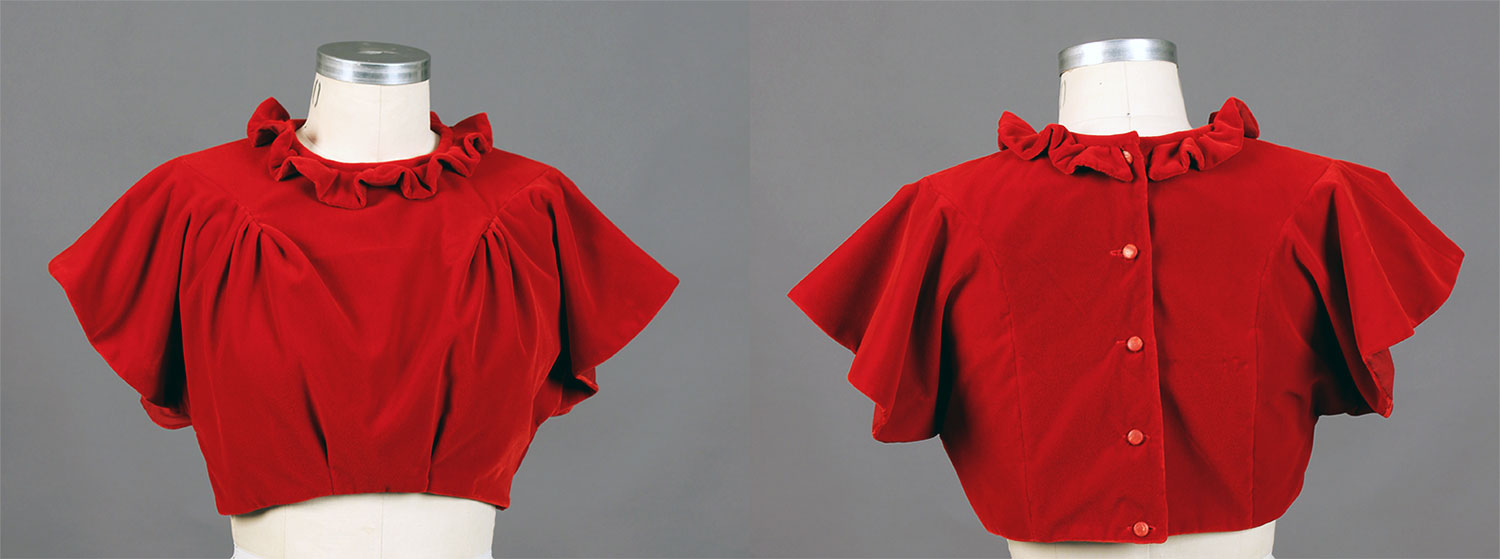Tweedle-Dum
& Tweedle-Dee


The bodice block for these was essentially the same as Bud and Bloom. I wanted to experiment using a textile with opposite characteristics to the linen in terms of weight and density. Tweedle-Dum and Tweele-Dee are sewn in velvet and lined with cotton. I often play with colour coding when considering clothing and contexts, Red and Green is one of my favourite combinations of opposites, and adheres to the season of Santa Claus. It is also the colour code of a sorry little adored room in my folky dome. I experimented with collar forms and eventually resolved to work with essentially a strip of fabric and a circle, creating a soft clown collar on the red, and a bow tie collar on the green. Many conceptually interesting technically usages come out of cloth such as the use of iconic geometric forms such as rectangles and circles. I love this pairing; I find them really quite gorgeous and funny.

Bud
& Bloom

When I first began this work I was feeling vulnerable and I simply wanted to make a pairing of gentle, soft “feminine” airy dresses as well as take on some technical challenges with-in the process of draping and pattern making. Lanvin is the French dressmaker and designer who grew her domestic dressmaking into a couture business in response to her friend’s interest in the garments she made. Women were particularly interested in her coordinating garments, pairing child and parent, mother and daughter. I often think of these primary relationships and the affect and significance of them in my (our) life. We are often indebted to the impact of childhood for good or for bad in our creative production. I love the idea of thinking about clothing in terms of relationship. I was interested again in coming up with a garment, which had no hardware, possessed soft shaping, and a feeling of gentle tenderness. I am proud of these designs from a traditional dress making perspective. This project started with exploring what I would call a short sleeve western style kimono sleeve and creating shape out of the shoulder area through a slash allowing me to expand outwards into soft folds (Bloom), or fold inwards into relaxed pleats (Bud). This is enormously exciting for me in terms of thinking about the potential of textile forms, and shaping with “spineless” materials such as cloth. I have been thinking about weakness not necessarily as a liability or something to be criticized but as perhaps a departure point.
Bud and Bloom are constructed out of pale pink and pale chartreuse coloured linen fabrics. My life long interest in unfolding mirroring forms was further explored in these two dresses by mirroring the pattern on the horizontal axis. With each of these dresses I started to experiment with a co-ordinate form which possessed the characteristic of the slashed areas in Bud and Bloom. In the end through experimentation and a love of millinery I created flower hat forms for the head, one expanding outwards and the other folding inwards. These dresses were a particular technical feat because I was trying to create a form with shaping with as few seams as possible. The front of Bud is cut from one piece at the front and one piece at the back. Bloom is two because it is essentially a princess line.
These dresses could either be for adults or children in their styling. When I have more time and money I will create them in a child size.












